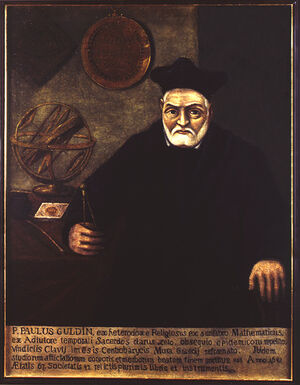Paul Guldin (nonfiction)
Paul Guldin (original name Habakkuk Guldin; 12 June 1577 (Mels) – 3 November 1643 (Graz)) was a Swiss Jesuit mathematician and astronomer.
He discovered the Guldinus theorem to determine the surface and the volume of a solid of revolution. (This theorem is also known as the Pappus–Guldinus theorem and Pappus's centroid theorem, attributed to Pappus of Alexandria.)
Guldin was noted for his association with the German mathematician and astronomer Johannes Kepler.
Guldin composed a critique of Cavalieri's method of indivisibles.
He was born in Mels, Switzerland, and was a professor of mathematics in Graz and Vienna.
In Paolo Casati's astronomical work Terra machinis mota (1658), Casati imagines a dialogue among Guldin, Galileo, and Marin Mersenne on various intellectual problems of cosmology, geography, astronomy and geodesy.
In the News
Fiction cross-reference
Nonfiction cross-reference
- Galileo Galilei (nonfiction)
- Johannes Kepler (nonfiction)
- Mathematics (nonfiction)
- Marin Mersenne (nonfiction)
External links:
- Paul Guldin @ Wikipedia
